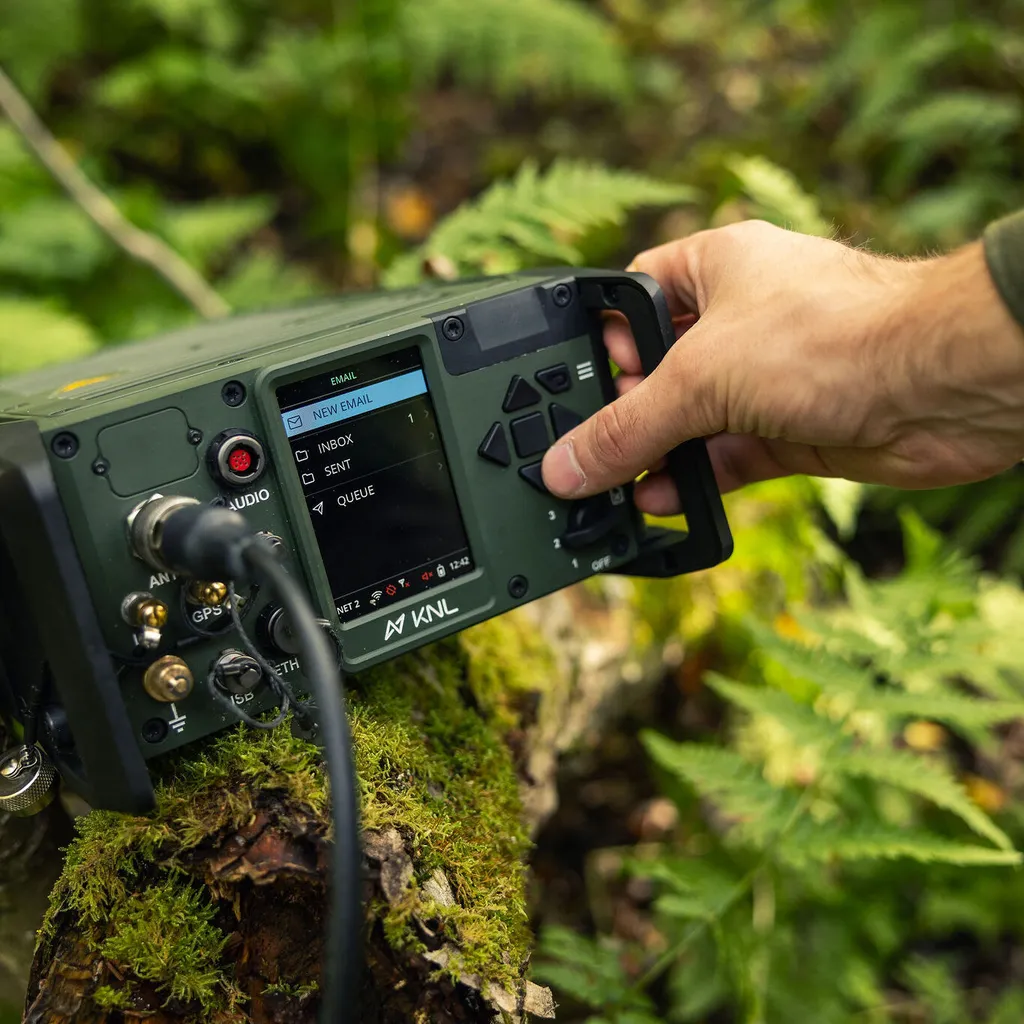In an era where geopolitical tensions are reshaping global defense strategies, Telenor ASA’s KNL subsidiary has emerged as a pivotal player in the Nordic defense technology sector. With its Cognitive Networked High Frequency (CNHF) radio technology, KNL is not just adapting to the demands of modern warfare—it is redefining them. As NATO allies commit to a historic 5% of GDP defense spending by 2035, the company’s secure, resilient communication systems are poised to become a cornerstone of future military infrastructure. For investors, this represents a rare convergence of technological innovation, strategic alignment with global defense priorities, and high-margin growth potential.
KNL’s CNHF manpack radios are a breakthrough in military communications. Unlike traditional systems reliant on satellites or terrestrial networks, these radios operate independently, using a cognitive, adaptive waveform to maintain connectivity in jammed or infrastructure-denied environments. Their software-defined architecture allows for remote updates and configurations, ensuring they stay ahead of evolving cyber and electronic warfare threats. The technology’s real-world validation is compelling. Tested in NATO exercises like CWIX25 and deployed in active conflict zones, CNHF radios have demonstrated their ability to form autonomous networks within seconds, even in full-scale border warfare scenarios. This resilience is critical for NATO’s 2025-2030 modernization goals, which prioritize interoperability, digital transformation, and secure data sharing. By aligning with projects like DEMETER, KNL’s radios are now embedded in the alliance’s vision for real-time, redundant communication systems.
The Nordic Defence Cooperation (NORDEFCO) has become a linchpin for KNL’s expansion. In April 2025, the subsidiary secured a 10-year €15 million framework agreement with Finland and Sweden’s armed forces, delivering CNHF radios by year-end 2025. This contract is more than a regional win—it’s a strategic foothold in NATO’s defense industrial base. With Sweden and Finland now NATO members, the demand for sovereign, interoperable communication systems is surging. KNL’s technology is already in pilot testing with Norway and other NATO allies, signaling a broader adoption trend. CEO Toni Lindén has hinted that the Nordic contract is just the beginning, with potential for multi-billion krone growth as NATO allies seek to replace legacy systems with next-generation solutions. For Telenor, this represents a high-margin, long-term revenue stream with minimal capital expenditure, given the radios’ software-defined nature.
The 2025 NATO Summit in The Hague marked a paradigm shift. Allies agreed to increase defense spending to 5% of GDP by 2035, with 3.5% allocated to core military expenditures and 1.5% to infrastructure, cybersecurity, and resilience. This targets a $4.2 trillion annual defense budget by 2035—a 280% increase from 2024 levels. For companies like KNL, this means sustained demand for secure, AI-driven communication systems. Telenor’s KNL division is uniquely positioned to capitalize on this shift. Its CNHF radios align with NATO’s emphasis on “resilience” and “autonomy,” while its software-defined architecture supports rapid modernization. As European allies like Germany, France, and Italy grapple with fiscal constraints, the need for cost-effective, scalable solutions will amplify KNL’s competitive edge.
While KNL’s standalone financials remain opaque, Telenor’s broader performance offers insight. In Q2 2025, the company reported a net profit margin of 13.67%, driven by efficient cost management and strong EBITDA growth. The defense division, though nascent, is already contributing to this momentum. With the Nordic contract secured and NATO’s spending trajectory locked in, KNL’s revenue is expected to grow at a compound annual rate exceeding 20% through 2030. Competitive advantages are clear. KNL’s technology outperforms legacy HF systems in range, security, and adaptability. Its interoperability with NATO C2 systems eliminates costly overhauls, making it a cost-effective upgrade path for allies. Meanwhile, the U.S.-led defense industrial base’s focus on off-the-shelf solutions creates a niche for European innovators like KNL to fill.
For investors, the case for Telenor’s defense division is compelling. The CNHF radios address a critical gap in NATO’s communication infrastructure, with demand driven by geopolitical instability, AI integration, and the Russia-Ukraine war’s lessons. With a 10-year contract in hand and a pipeline of NATO pilots, KNL’s revenue visibility is robust. Moreover, Telenor’s parent company offers a safety net. Its strong balance sheet, with $9.5

